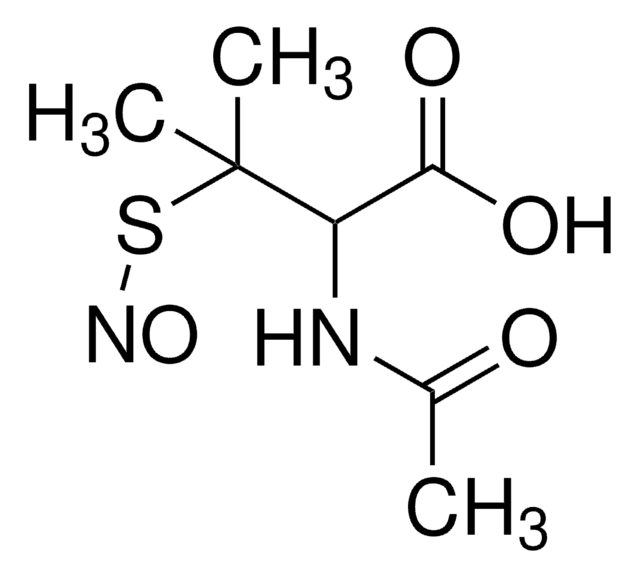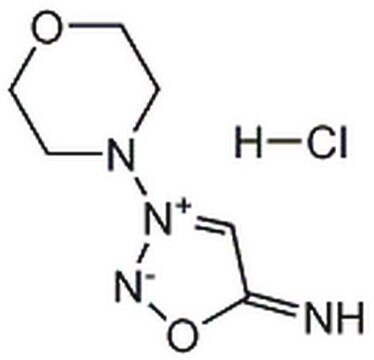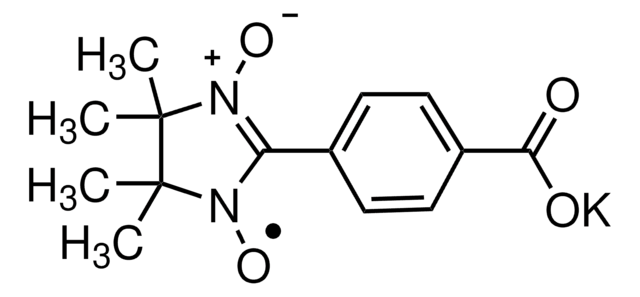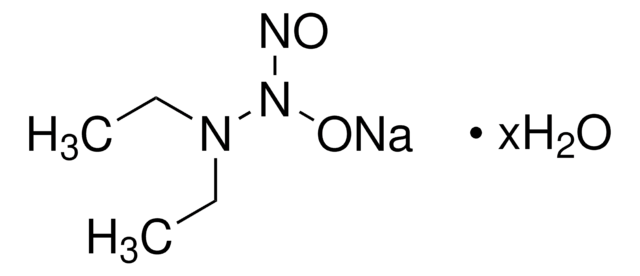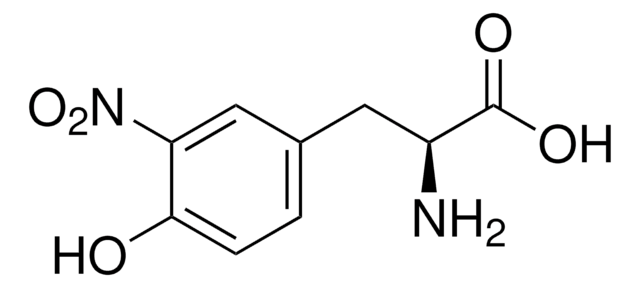Kluczowe dokumenty
N4148
S-Nitrosoglutathione
≥97%
Synonim(y):
GSNO, SNOG
About This Item
Polecane produkty
Poziom jakości
Próba
≥97%
Postać
powder
rozpuszczalność
water: soluble 19.60-20.40 mg/mL
temp. przechowywania
−20°C
ciąg SMILES
N[C@@H](CCC(=O)N[C@@H](CSN=O)C(=O)NCC(O)=O)C(O)=O
InChI
1S/C10H16N4O7S/c11-5(10(19)20)1-2-7(15)13-6(4-22-14-21)9(18)12-3-8(16)17/h5-6H,1-4,11H2,(H,12,18)(H,13,15)(H,16,17)(H,19,20)/t5-,6-/m0/s1
Klucz InChI
HYHSBSXUHZOYLX-WDSKDSINSA-N
Opis ogólny
Zastosowanie
- as a standard in reversed phase chromatography coupled to chemical vapour generation and atomic fluorescence detector (RPC-CVGAFS) and reversed phase chromatography fluorimetric (RPC-FD).
- as a standard in spectrophotometric and high-performance liquid chromatography (HPLC) assay.
Działania biochem./fizjol.
Kod klasy składowania
11 - Combustible Solids
Klasa zagrożenia wodnego (WGK)
WGK 3
Środki ochrony indywidualnej
dust mask type N95 (US), Eyeshields, Gloves
Certyfikaty analizy (CoA)
Poszukaj Certyfikaty analizy (CoA), wpisując numer partii/serii produktów. Numery serii i partii można znaleźć na etykiecie produktu po słowach „seria” lub „partia”.
Masz już ten produkt?
Dokumenty związane z niedawno zakupionymi produktami zostały zamieszczone w Bibliotece dokumentów.
Klienci oglądali również te produkty
Nasz zespół naukowców ma doświadczenie we wszystkich obszarach badań, w tym w naukach przyrodniczych, materiałoznawstwie, syntezie chemicznej, chromatografii, analityce i wielu innych dziedzinach.
Skontaktuj się z zespołem ds. pomocy technicznej

